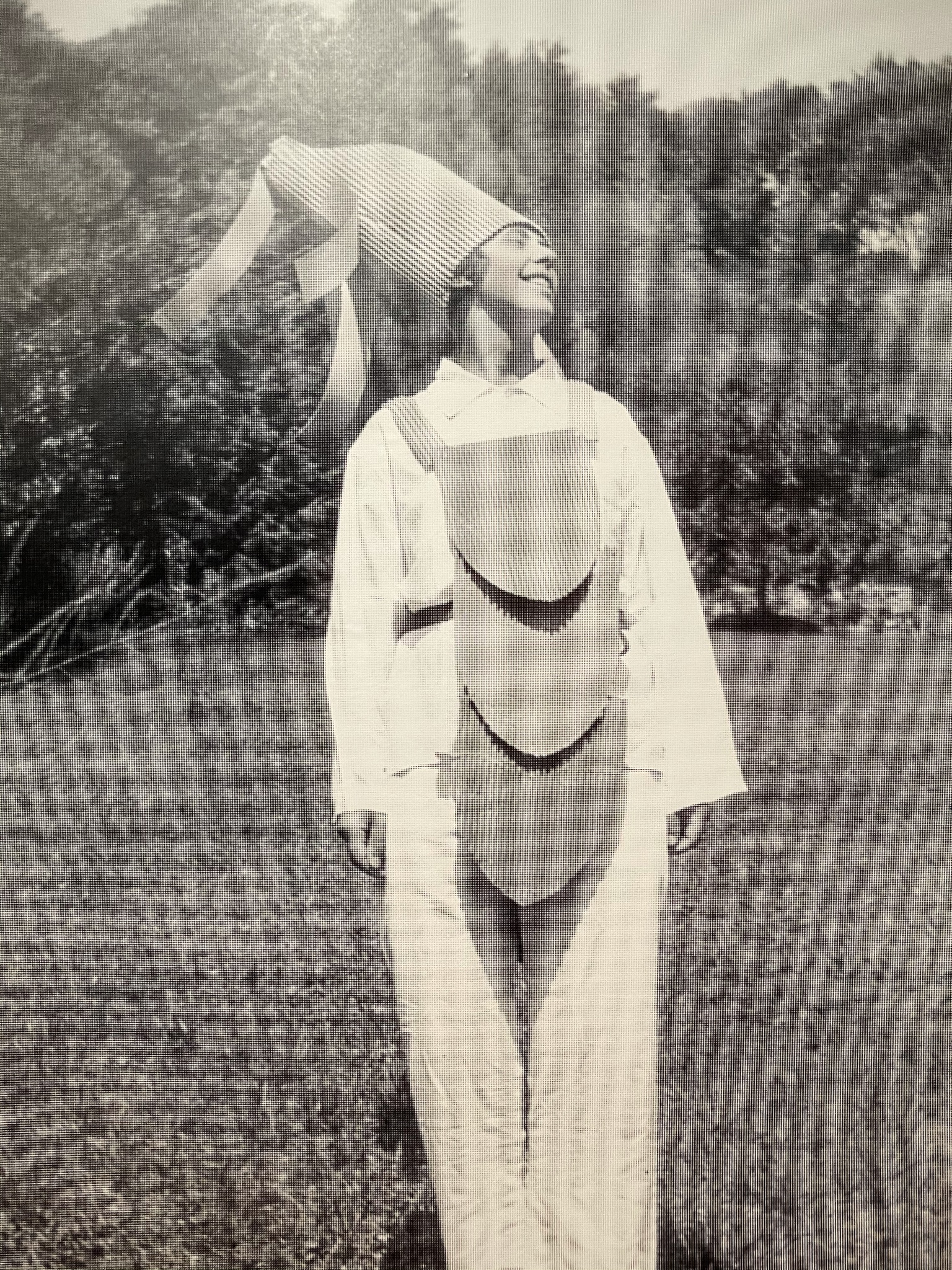I was really looking forward to visiting this exhibition at the Kunstmuseum in Basel. It is the most comprehensive presentation of her life and career to date and the first to show the sheer volume and diversity of her work.
But firstly, who is she?
There is some awareness of her, here, in her native Switzerland, partly because she was portrayed on the 50 franc banknote from 1995-2016. Outside of the country the awareness is much lower. I admit that I didn’t really know much about her before I moved here and then only about her involvement with the Dada movement and that she was married to the artist Hans Arp.

The exhibition takes you on a journey through her life. I felt excited and inspired learning more about this multifaceted artist. I had no idea that her creative output was so large and varied. She wasn’t just an abstract artist. She was also a dancer, sculptor, architect, interior designer, teacher and textile maker.
More often than not she was wearing several of these hats at once. Whilst teaching applied arts in Zurich she becomes involved with the Dadaists and also studies modern expressive dance with Rudolf von Laban. It is during this period she meets Hans-Arp. Her teaching is vital as it provided a steady income which sustained her and Arp. For the majority of their marriage she is the breadwinner.
She and Hans Arp become French citizens and spend a lot of time in Strasbourg. It is here where she receives commissions to design interiors. The Aubette in Strasbourg was her biggest commission. She designed bars and a tea room for the entertainment centre. Unfortunately major alterations in the 1930s changed much of her original work and you can no longer see it.
It is when the couple move to Paris, that she exhibits her first abstract paintings and becomes involved in the International Avant-Garde scene. She was co-editor of a magazine (Plastique/Plastic) and through this encouraged the exchange of ideas on both sides of the Atlantic.
In 1937 she had 24 works in a group exhibition at the Kunsthalle in Basel. This was perhaps the most important presentation of her art in her lifetime. Sadly there aren’t very many records of this, there is only one installation photo but this only shows a part of one of her works sandwiched between others by Naum Gabo, El Lissitzky and László Moholy-Nagy.
The last years of her life were spent in a kind of forced isolation. She had to flee her home in France due to the rise of Nazism. Although she returned to her native Switzerland she was now considered a migrant and on a tourist visa, having taken French citizenship a few years earlier. I listed to a curators talk and they reflected on how the current Covid-19 situation made them think about and relate to her situation in a different way.
She tragically died young, at the age of 54, from carbon monoxide poisoning whilst staying with the artist Max Bill. Who knows what more she could have achieved if she’d lived longer. How much more she would have created? What new avenues would she have explored?



It is wonderful that her work is now being exposed to a much wider audience and to discover that she inspires many contemporary artists e.g. the South Korean artist Haegue Yang, who currently has an exhibition at Tate St Ives. She also exhibited at the Aubette in Strasbourg.
The exhibition runs until 20 June 2021 at Kunstmuseum Basel. It is very popular and numbers are restricted due to Covid-19. I really advise you to book an advance ticket.
UK friends, don’t miss the chance to see this exhibition when it comes to London later this year. It will be on at Tate Modern from 15 July until 17 October 2021 before it travels to MOMA from 21 November until 21 March 2022.
















